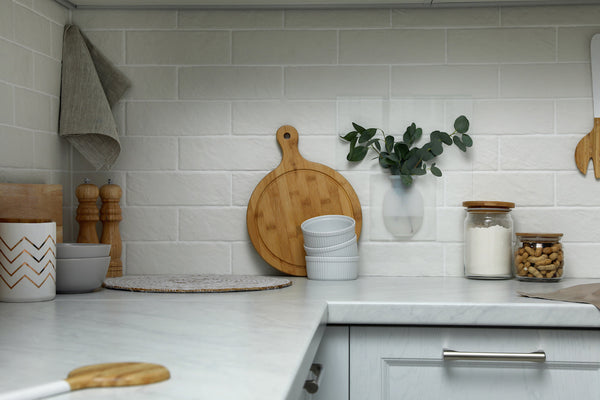
When installing your new granite countertop, you want to be sure that it’s properly fastened and will last for years to come. The key to ensuring this is by using the right adhesive, which may seem like an easy step but can make all the difference in your finished product! Here are three simple tips on how to apply countertop adhesive like a pro.
Why You Need To Be Extremely Careful When Applying Adhesive
The use of countertop adhesive is crucial when working with granite and other natural stone, but it can be difficult to apply correctly. Countertop adhesive, also known as epoxy, is made up of two liquids that need to be applied simultaneously in a perfectly thin layer for maximum strength. If you’re not careful about how you apply your epoxy, it will become lumpy or overly thick in places. This can cause an uneven application that leads to damaged countertops and further issues down the road. Keep reading for tips on avoiding common mistakes while applying your epoxy and ensuring that your countertops look flawless!
How to Properly Measure for Adhesive
An application of adhesive that’s too thick or uneven can lead to a countertop that pops up or delaminates. To avoid such an outcome, it’s important to measure carefully and apply your adhesive in small increments. Start by mixing your chosen brand of adhesive according to its instructions and use a level to make sure you have adequate coverage for your project. If you are using more than one container, always apply equal amounts so each container will have a consistent thickness throughout—this will help ensure even curing across all areas and reduce pop-ups over time. Depending on which type of adhesive you’re using, applying it in thin layers can be slightly challenging; however, remember that extra material is easier to remove than too little!
#1: Apply Evenly
It’s important to make sure that you don’t have any areas where your epoxy is thicker than others. This means that you should spread it out across all of your surface area, so there are no drips or bumps—just a smooth finish. Even if you don’t have any areas where excess epoxy has built up, take care to keep spreading until all areas are covered evenly. It might seem like overkill at first, but trust us—you want every inch covered in an even coat! Don’t stop until every part of your surface has been completely coated with liquid; once one side has dried completely (usually around 20 minutes), flip over and repeat for another side. You’ll find that your final product will have a much smoother feel and appearance.
#2: Use an Applicator Stick
Using an applicator stick helps ensure that you get every last drop of epoxy out of your container. You’ll likely find yourself using far less material than you would otherwise if you were trying to pour directly from a bottle, which saves money and ensures that none goes to waste. Make sure to use a stick long enough to reach into hard-to-reach spots without getting too close to your surface area; try using one similar in size and shape to what’s pictured above! When applying multiple coats, always wait until each previous coat has fully dried before adding more epoxy. Your top coat should be extremely thin, and you shouldn’t see any bubbles when it dries. Wait 10-15 minutes after applying your top coat to give everything time to dry completely before moving on to additional steps!
#3: Be Patient
One of the most common mistakes people make when installing their own countertops is rushing through the process. Not only does rushing mean that you’re more likely to make errors, but it also increases your chances of damaging your new countertops during installation. Natural stone can crack easily if handled roughly, so work slowly and carefully throughout each step! Once you’ve finished all three steps, give everything some time to dry before putting anything on top of them; 24 hours is ideal for most projects, though some may require longer depending on their thickness. Now that you know how to install your countertops properly, you can breathe easy knowing that your project is in good hands! Good luck!
Some Considerations When Buying Adhesive
When choosing your countertop adhesive, make sure you choose an industrial-grade glue that’s resistant to extreme temperatures and moisture. Most countertop adhesives will include product instructions, but you should also read reviews from DIYers who have installed granite countertops. If a particular type of adhesive doesn’t work for them, cross it off your list! It’s also helpful to find out which brands are most popular in your area so you can find one that works best with local contractors and suppliers. Once you know what kind of adhesive to buy, you need to learn how much product is necessary for your project. The average countertop adhesive is sold by weight and covers approximately 20 square feet per container.
Conclusion
Understanding how to use countertop adhesive is an important part of installing a granite or quartz counter. The final result of your installation will depend heavily on proper application, so it’s critical that you use care when applying adhesive. Our best advice is to follow these three tips and work carefully! Let us know if you have any questions in our comment section below! As always, we appreciate your feedback.